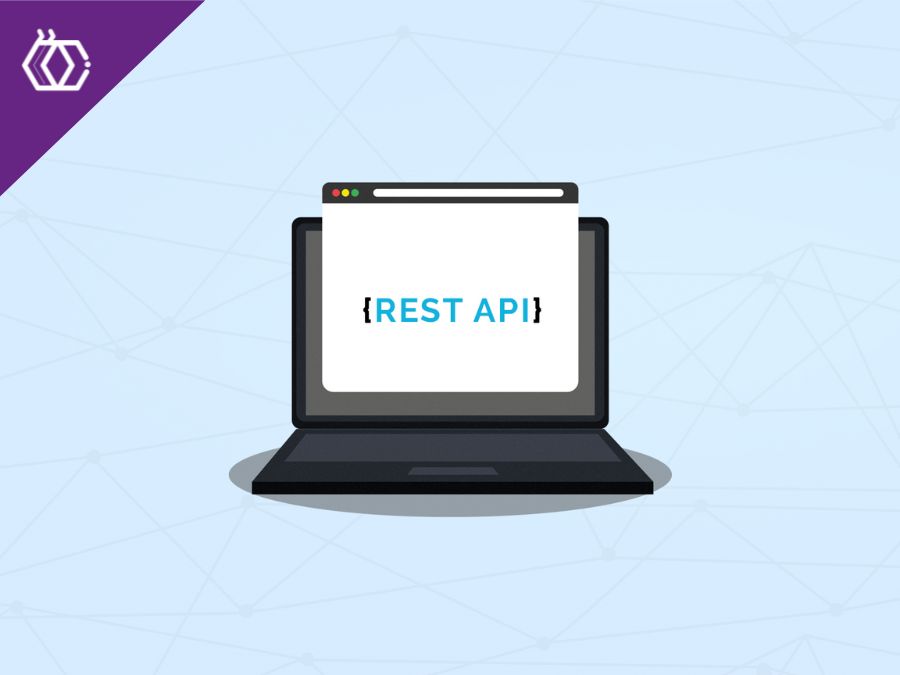

REST
(7 minutes of reading) In the current scenario, where communication between distributed systems is essential, REST (Representational State Transfer) was developed. It is a widely adopted architectural style for developing APIs on the web. In this article, we will explore in details the concept of REST, its fundamental principles, its architecture, and its practical applications. WHAT IS REST? REST, or Representational State Transfer, is an architectural style that establishes a set of principles and constraints for the design of distributed systems. REST was introduced by Roy Fielding in his doctoral thesis in 2000, where he also described the architecture of the HTTP Protocol (Hypertext Transfer Protocol). Unlike other architectural styles such as SOAP, REST is simpler and based on existing web standards and protocols. The style uses fundamental web principles such as URIs (Uniform resource Identifiers), HTTP and XML or JSON for data representation. FUNDAMENTAL CONCEPTS OF REST To fully understand REST, it is important to know its fundamental concepts: Resources: In REST, everything is considered a resource, be it an object, a representation of data, or a collection of information. Each resource is identified by a URI (Uniform resource identifier) unique. HTTP Methods: REST uses HTTP protocol methods, such as GET, POST, PUT, and DELETE, to perform operations on resources. For example, the GET method is used to get information about a resource, while the POST method is used to create a new resource. Representations: Resources in REST can be represented in different formats, such as XML (eXtensible Markup Language) or JSON. The choice of representation depends on the needs and preferences of the system or application. Stateless: REST is stateless, which means that every request made to the server must contain all the information it needs to be processed. The server does not keep any state about previous requests from the client. HATEOAS: The HATEOAS principle (Hypermedia as the engine of Application State) is one of the key features of REST. He suggests that server responses should contain links (hyperlinks) that allow the client to discover and navigate to other related resources. REST ARCHITECTURE REST architecture is based on a set of constraints and principles aimed at simplicity, scalability, and interoperability. The most important restrictions are: Uniform interface: REST defines a uniform interface for client-server interactions. This interface consists of standardized HTTP methods, URIs for identifying resources, and representing the data in a familiar format such as XML or JSON. Client Server: REST separates the client (application that consumes resources) from the server (application that provides resources). This separation allows components to evolve independently and promotes scalability. Stateless: As mentioned earlier, REST is stateless, that is, each request made to the server contains all the necessary information to be processed. This allows the servers to be highly scalable and simplifies system maintenance. Cache: REST supports caching, allowing server responses to be cached by the client or intermediary servers. This improves system efficiency and scalability. Layered system: REST allows the inclusion of intermediate layers, such as cache servers or gateways, to improve the performance, security, and scalability of the system. REST BENEFITS REST offers a few benefits that make it a popular choice for developing web APIs: 1) SIMPLICITY REST is based on existing web standards and protocols, making it easy to understand and implement. Its streamlined, feature-based approach makes it easy to create intuitive, user-friendly APIs. 2) SCALABILITY Stateless architecture allows servers to be highly scalable. Each request contains all the necessary information, eliminating the need to maintain state or sessions on the server. 3) INTEROPERABILITY REST is platform and language independent, which means that applications built on different technologies can communicate using the uniform REST interface. This facilitates systems integration and promotes interoperability between heterogeneous systems. 4) FLEXIBILITY REST supports different representation formats, such as XML and JSON, allowing clients and servers to choose the format that best suits their needs. 5) CACHE SUPPORT REST supports caching, which improves the performance and efficiency of client-server interactions. Responses can be cached and reused when needed, reducing the load on the server, and improving the user experience. PRACTICAL APPLICATIONS OF REST REST is widely used in a variety of applications and scenarios, including: 1) WEB APIs REST is one of the most popular architectural styles for developing web APIs. It offers a simple, scalable approach to exposing and consuming resources in a distributed architecture. 2) SYSTEM INTEGRATIONS REST is used in systems integration, allowing the exchange of information between applications and heterogeneous systems. Through RESTful APIs, different systems can communicate and share data efficiently and in a standardized way. 3) MOBILE APPLICATIONS REST is widely adopted in mobile application development as it allows applications to communicate with servers and efficiently consume web services. The stateless capabilities and simplicity of REST are especially suited to the constraints and requirements of mobile applications. 4) INTERNET OF THINGS (IoT) With the growth of the Internet of Things, REST plays a key role in the communication between smart devices. It allows devices to be exposed as resources and to communicate in a standardized and interoperable way. CONCLUSION REST is a widely used architectural style for developing web APIs and distributed systems. With its fundamental concepts such as resources, HTTP methods, and data representations, REST offers simplicity, scalability, interoperability, and flexibility. Stateless architecture and caching support make it suitable for a wide range of applications, from web APIs to systems integration and mobile applications. As an essential part of the modern web, REST will continue to play a vital role in the exchange of information and interconnectivity between distributed systems. And there? What do you think of our content? Be sure to follow us on social media to stay up to date!
Share this article on your social networks:
Rate this article:
[yasr_visitor_votes size=”medium”]



